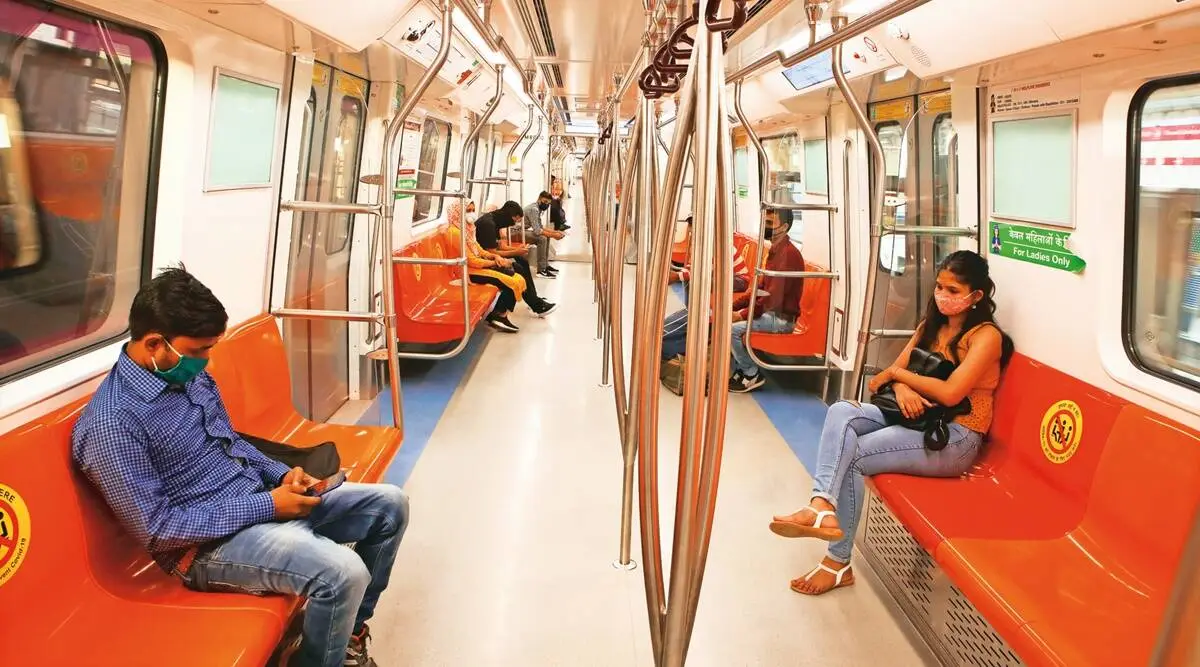 Records maintained by the Delhi Metro Rail Corporation (DMRC) show that 14.86 lakh passengers journeys were performed on the network on June 23, up from 6.38 lakh on June 7, when services commenced after nearly a month. (File Photo)
Records maintained by the Delhi Metro Rail Corporation (DMRC) show that 14.86 lakh passengers journeys were performed on the network on June 23, up from 6.38 lakh on June 7, when services commenced after nearly a month. (File Photo)
With the average waiting time to enter its key stations crossing one hour, the Delhi Metro Thursday clarified that it is keeping limited gates open as train coaches are currently allowed to carry only around 25 passengers each as against the capacity of 300.
Opening more entry gates will lead to a rush of commuters inside the stations and trains, the DMRC said. According to a Delhi Disaster Management Authority (DDMA) order, metro is allowed to operate at 50 per cent of seating capacity.
As a result, a train coach that can carry up to 300 commuters can currently accommodate only around 25 people.
“In recent days, long queues have been observed outside metro stations as entry to the stations is regulated due to restrictions on the number of passengers to be allowed inside the train. The long queues are caused as single entry points only are permitted at most of the Metro stations as in a mass transit system it is difficult to regulate the number of persons inside the system once entry is permitted,” said DMRC chief spokesperson Anuj Dayal.
Dayal added that the metro is running 5100 train trips daily with a peak frequency of 2.5 minutes to 5 minutes on all the major corridors. “This was the same frequency at which Metro was operating during the normal pre-Covid times. The Metro is thus operating and running at its full frequency/capacity but with a reduced number of passengers owing to restrictions,” he said.
Records maintained by the Delhi Metro Rail Corporation (DMRC) show that 14.86 lakh passengers journeys were performed on the network on June 23, up from 6.38 lakh on June 7, when services commenced after nearly a month.
Passenger journeys are calculated by taking into account the corridors used by a commuter in reaching from point A to point B. For example, if a passenger used three separate corridors in reaching from Huda City Centre to Mayur Vihar, she will be counted thrice.
- The Indian Express website has been rated GREEN for its credibility and trustworthiness by Newsguard, a global service that rates news sources for their journalistic standards.

